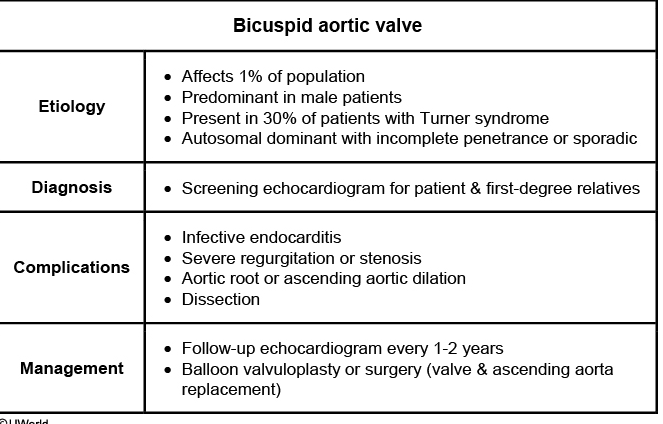bicuspid aortic valve

Bicuspid aortic valve (AV) is one of the most common (about 1% of the population) types of congenital heart disease. It can occur sporadically or as an autosomal dominant inherited disorder with incomplete penetrance. Patients with uncomplicated bicuspid valves typically have an ejection murmur and a sound or click best heard at the lower left sternal border. BAV is also a risk factor for aortic dilation, with a reported prevalence of 20%–80%. Progressive aortic dilation can occur in the aortic sinuses, aortic root, or ascending aorta, leading to aortic aneurysm formation and risk for aortic dissection.
Patients with BAV should have a thorough evaluation with echocardiogram, CT, or MRI imaging to assess the aortic root and ascending aorta for dilation. Chest x-ray is usually unremarkable but can occasionally reveal AV calcification, aortic enlargement (due to aneurysm), or rib notching (due to coarctation). Transthoracic echocardiogram is recommended for diagnosing bicuspid AV and for follow-up. First-degree relatives also should be screened for bicuspid AV to avoid complications, ascending aorta or aortic root dilation, and dissection. Patients are at increased risk for endocarditis due to abnormal valve anatomy and function; however, routine antibiotic prophylaxis is not recommended.